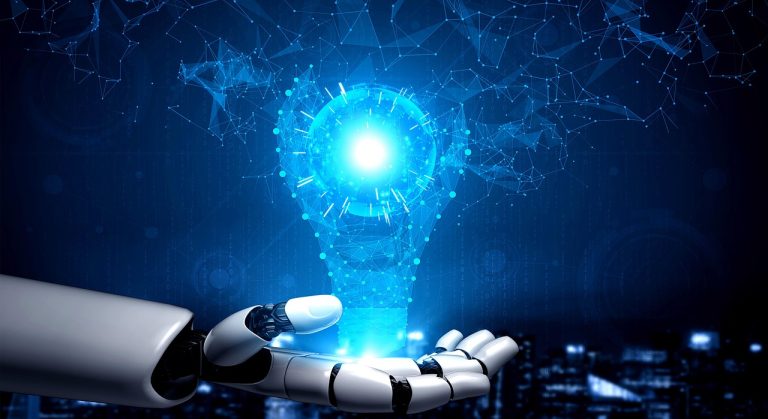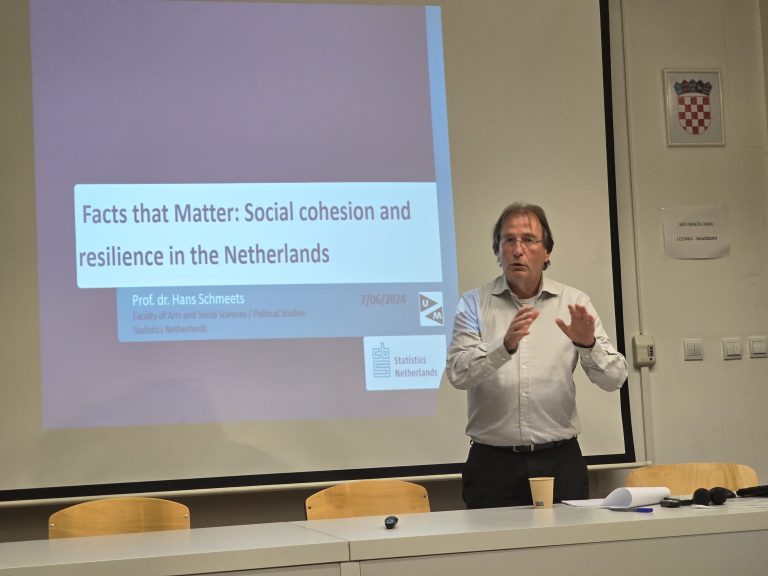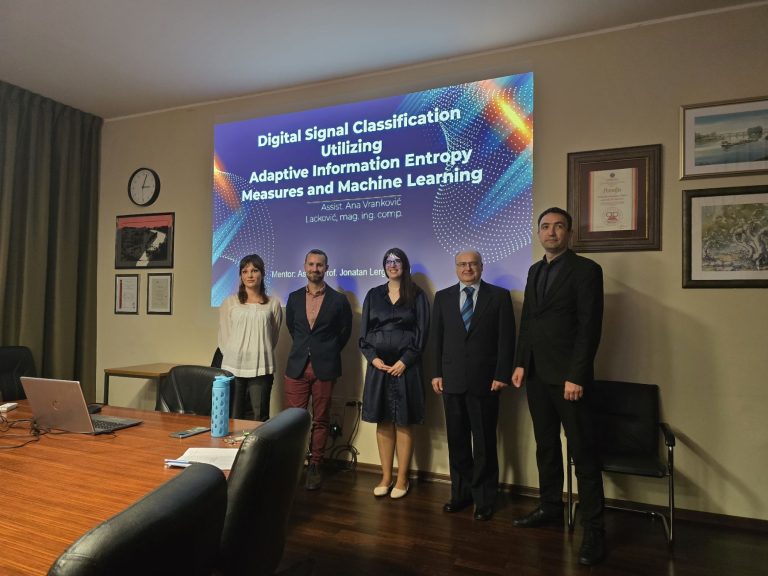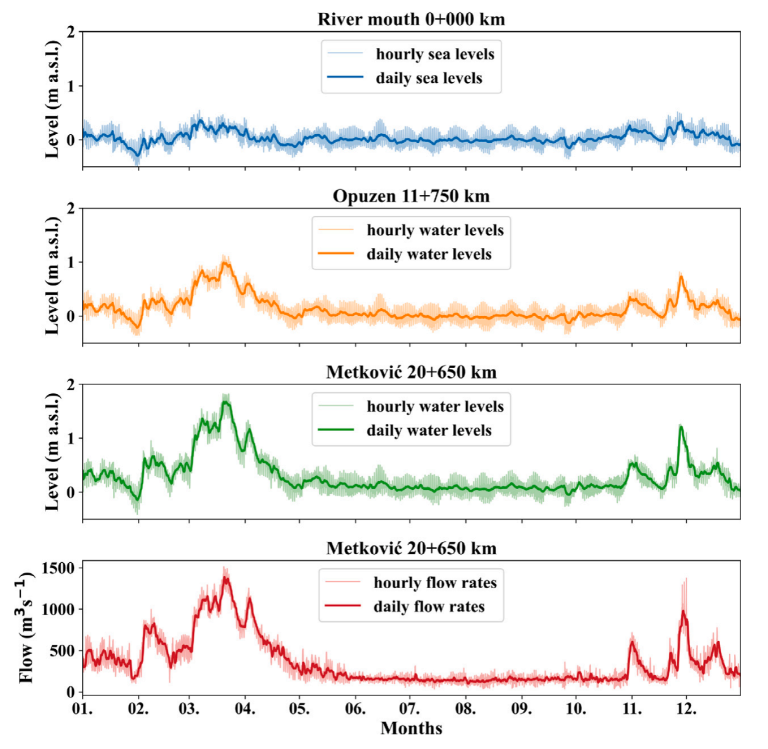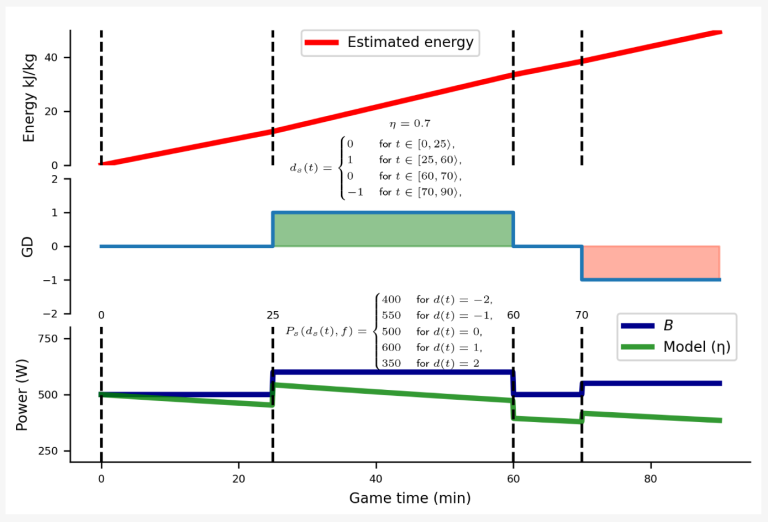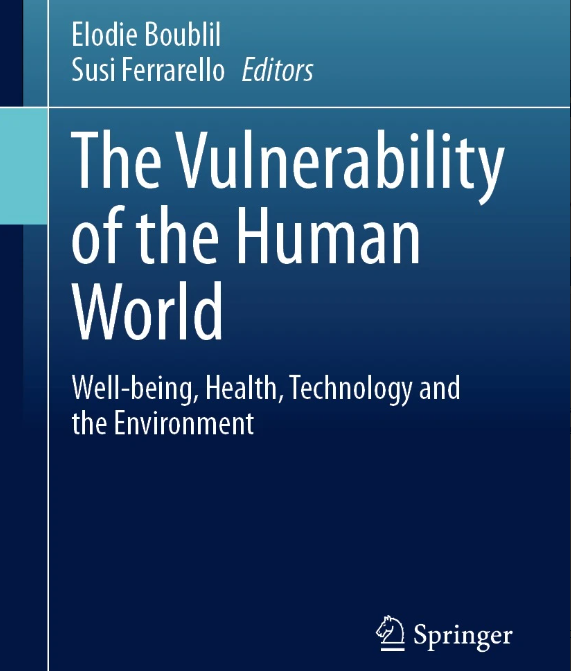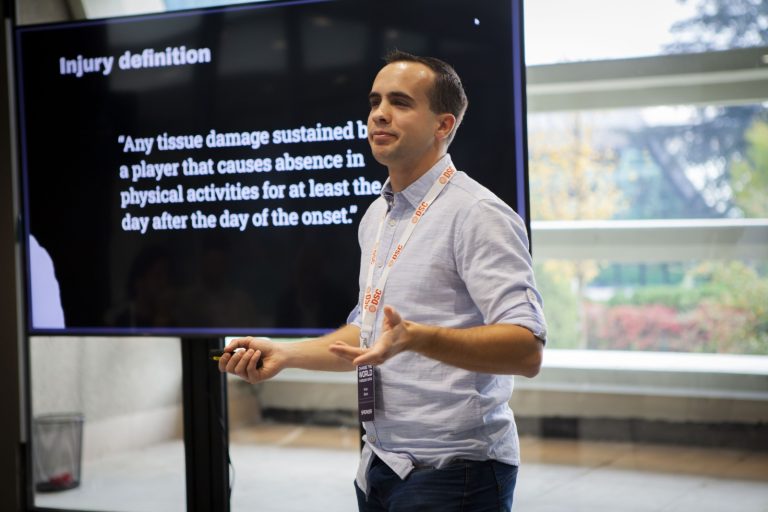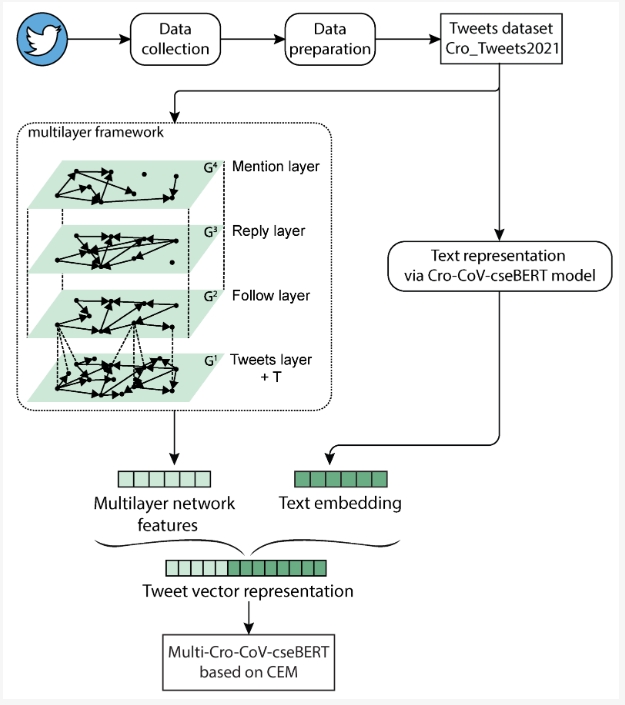The development of AI, particularly complex systems like deep neural networks, sharply cuts into the fabric of patent law, leading to a constant reassessment of existing principles and provisions and their interpretation. Patent law provisions, including the European Patent Convention, were not written with computer programs, let alone AI systems, in mind. While the law […]
News
Presentation of the NPOO project Peoplet
On June 7th, a presentation was held for the NPOO project Peoplet, funded under the program “Start-up/Spin-off Companies of Young Researchers”. The project leader is Dr. Dino Pitoski, a Ph.D. candidate at the AIRI Center. A ResearchClass was conducted titled “Introduction to CBS NL and the SSW Survey | Peoplet Project: Concept Networks & Organizational […]
Ana Vranković Lacković defended her doctoral thesis
We are happy to announce that on 16th of May, 2024. Ana Vranković Lacković has successfully defended her doctoral thesis, titled “Digital Signal Classification Utilizing Adaptive Information Entropy Measures and Machine Learning,” at the Faculty of Engineering RITEH University of Rijeka.Ana’s thesis is the result of hard work and represents a significant advancement in the […]
Estimating Water Levels and Discharges in Tidal Rivers and Estuaries: Review of Machine Learning Approaches
Understanding the dynamics of tidal rivers and estuaries is critical for reliable water management. Recently, the use of Machine Learning (ML) has increased in favor of hydrologic and hydraulic models. The advantages of ML over physically based models are most evident in modeling complex and nonlinear hydrologic processes and inverse problems. This study provides a […]
Building Individual Player Performance Profiles According to Pre-Game Expectations and Goal Difference in Soccer
Soccer player performance is influenced by multiple unpredictable factors. During a game, score changes and pre-game expectations affect the effort exerted by players. This study used GPS wearable sensors to track players’ energy expenditure in 5-min intervals, alongside recording the goal timings and the win and lose probabilities from betting sites. A mathematical model was […]
Aiming at Well-Being with Brain Implants: Any Risk of Implanting Unprecedented Vulnerabilities?
Many experimental brain-computer interfaces (BCIs) are currently being medically tested in paralyzed patients. While the new generations of implantable BCIs move rapidly ahead at trying to increase the patients’ well-being, ethical concerns about their potential effects on patients’ psychological dimensions (e.g. sense of agency and control) are growing. An important ethical concern to explore is […]
Development of computational algorithms based on digital signal processing and artificial intelligence methods with application in modern transport systems
The project is directed toward developing computational algorithms based on advanced digital signal processing techniques and artificial intelligence methods. The research will particularly focus on the computer-aided analysis of non-stationary signals using two-dimensional quadratic time-frequency distributions, where the improvement in time-frequency resolution and robustness to noise will be thoroughly studied. Moreover, adaptive algorithms for non-stationary […]
DSC Europe: Navigating Soccer Injury Prediction and More!
Arian Skoki, a Teaching Assistant at the University of Rijeka, enthusiastically reflects on the remarkable experience at the Data Science Conference Europe in Belgrade! 🚀 Immersed in a dynamic community of passionate and knowledgeable individuals, the event provided an excellent platform for Arian to connect with industry peers, fostering a valuable exchange of ideas and […]
INFCON23
INFCON23 – Scientific gathering of computer science PhD students, November 11 and 12, 2023! 🚀 An incredible showcase of 16+ top PhD researchers from the AIRI Center and invited lectures by Mirjana Kljajić Borštnar, FOV Maribor and Antonija Mandić, University North and presentations of activities at the UNIRI Doctoral School and the Prometej Fund by […]
Retweet Prediction Based on Heterogeneous Data Sources: The Combination of Text and Multilayer Network Features
Retweet prediction is an important task in the context of various problems, such as information spreading analysis, automatic fake news detection, social media monitoring, etc. In this study, we explore retweet prediction based on heterogeneous data sources. In order to classify a tweet according to the number of retweets, we combine features extracted from the […]
